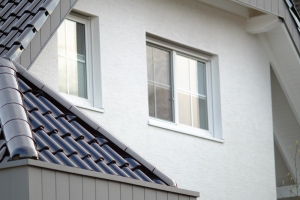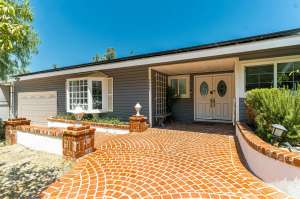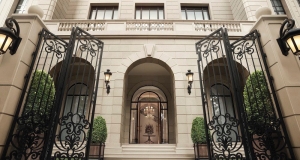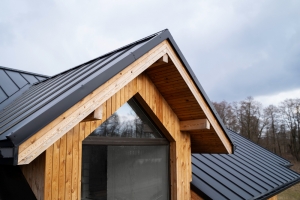Choosing between steel and wooden garden sheds can be tough. You're likely weighing durability, maintenance, and cost. Which option truly stands up to weather and time while fitting your budget?
Steel sheds often promise longevity and low upkeep, resisting rot and pests. For top-quality options, explore steel garden sheds to find the perfect fit for your needs.
Wooden sheds, however, offer charm but demand regular care. Let's dive into which choice best solves your storage dilemmas and enhances your outdoor space.
Durability and Maintenance Comparison
Let's dive into how steel garden sheds stack up against wooden sheds in terms of durability and maintenance. Which one holds up better over time?
- Steel Sheds: Tough and resistant to rot, insects, and fire, steel withstands harsh conditions with minimal upkeep, often just a quick wash.
- Wooden Sheds: Natural but prone to rot, pests, and weather damage, they demand regular painting or sealing to stay in good shape.
- Longevity Factor: Steel often outlasts wood due to its resilience, though rust can be an issue if not properly coated or maintained.
Considering your shed's purpose, steel might be the hassle-free choice if low maintenance is key. But wood offers charm if you're up for the effort.
Cost Effectiveness of Sheds
Budget plays a big role when picking between steel and wooden sheds. Let's break down the costs to see which fits your wallet better.
Initial Purchase Price
Steel sheds often come cheaper upfront, with small models starting around $300. Wooden sheds typically begin at $900 for basic designs.
Long-Term Expenses
Think about maintenance costs over time. Steel needs little beyond occasional rust treatment, while wood requires regular paint or varnish expenses.
Installation Costs
Installation can vary too. Steel sheds are often easier to assemble yourself, saving labor costs compared to heavier, complex wooden structures.
Value for Money
Assess the value. Steel might save cash long-term due to durability, but wood could add property value with its aesthetic appeal.
Aesthetic Appeal Differences
Appearance matters when adding a shed to your backyard. Let's compare how steel and wooden sheds impact the look of your outdoor space.
Steel Sheds: Modern Look
Steel sheds offer a sleek, industrial vibe. They suit minimalist or contemporary yards but might feel cold or out of place in rustic settings.
Wooden Sheds: Classic Charm
Wooden sheds bring warmth and a traditional feel. Their natural texture blends beautifully with gardens, evoking a cozy, timeless backyard aesthetic.
Customization Impact
Consider how looks can change. Steel often comes in limited colors, while wood can be painted or stained to match your home's style.
Landscape Integration
Think about your garden's vibe. Wood often integrates better with greenery, whereas steel might stand out unless paired with modern landscaping elements.
Customization and Versatility Options
Want a shed that fits your exact needs? Let's explore how steel and wooden sheds compare when it comes to customization and versatility.
- Steel Sheds: Limited in design options, steel sheds often come pre-designed with few ways to alter shape or add personal touches.
- Wooden Sheds: Highly adaptable, wood lets you paint, add windows, or extend structures easily, tailoring them to your specific vision.
- Functional Versatility: Wood wins for turning sheds into workshops or art spaces, thanks to easier wall modifications for shelves or hooks.
If personalizing your space is a priority, wood offers endless possibilities. Steel might work if you're fine with a standard, no-frills design.
Climate Considerations for Sheds
Weather can make or break your shed's lifespan. Let's see how steel and wooden sheds handle different climates, especially harsh conditions.
Steel in Extreme Weather
Steel sheds are tough against wind and snow but can rust in humid areas without proper coating. Insulation is often poor too.
Wood in Cold Climates
Wood offers natural insulation for cold weather, protecting stored items, but moisture can cause rot or mold if not sealed properly.
Hot and Humid Areas
In hot, humid regions, steel might overheat inside, while wood risks warping or pest damage unless treated with weather-resistant products.
Choosing for Your Region
Check your local climate. Steel suits dry, windy areas, while wood might need extra care in wet or freezing zones. Plan accordingly.
Environmental Impact Analysis
Concerned about your shed's eco-footprint? Let's compare the environmental impact of steel and wooden sheds to see which is greener for you.
- Steel Production: High energy use in manufacturing steel sheds creates a larger carbon footprint, though many are recyclable at end-of-life.
- Wooden Sheds: Sourcing wood can harm forests if not sustainably harvested, but biodegradable material reduces long-term waste compared to metal.
- Maintenance Impact: Wood treatments often involve chemicals that can harm the environment, whereas steel requires less frequent but intensive rust prevention.
For a deeper dive into sustainable options, check out Keter's guide. Eco-conscious choices depend on sourcing and upkeep.
Risk of Fire Evaluation
Safety is crucial when choosing a shed. Let's assess the fire risks of steel versus wooden sheds to keep your property secure.
Steel Sheds: Fire-Resistant
Steel doesn't burn, making it a safer bet near ignition sources. It won't fuel a fire, though contents inside could still ignite.
Wooden Sheds: Higher Risk
Wood is flammable and can quickly catch fire, especially if untreated. It's riskier near grills or in dry, wildfire-prone areas.
Mitigation Strategies
Reduce risks with precautions. For wood, use fire-retardant treatments; for steel, ensure proper spacing from heat sources to protect stored items.
Local Regulations
Look into local fire safety laws. Some areas might have rules on shed materials or placement, as notedat fire risk assessments.
Choose Your Shed Wisely
Weigh your priorities when deciding between steel and wooden sheds. Consider durability, cost, aesthetics, customization, climate, environmental impact, and fire risks. Your choice shapes your storage solution, so pick what aligns with your needs and values for a shed that stands the test of time.






